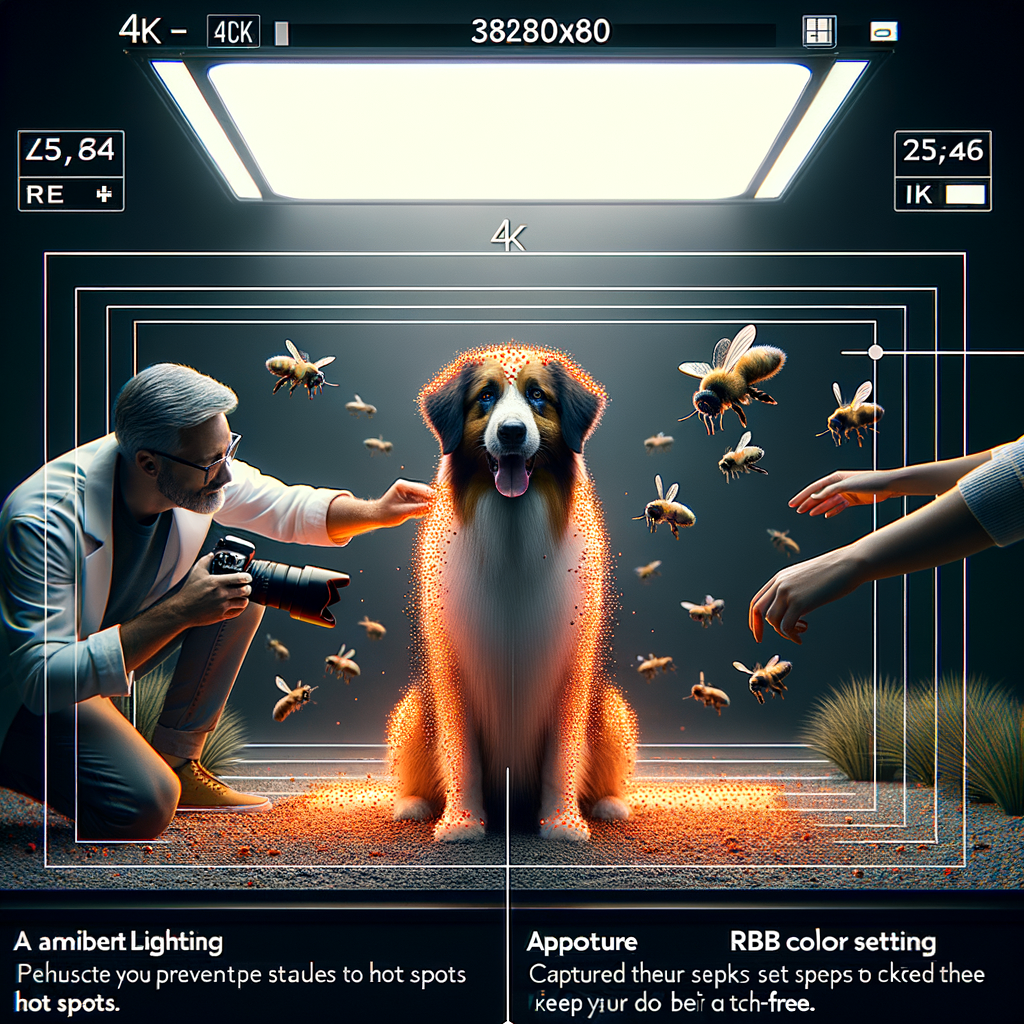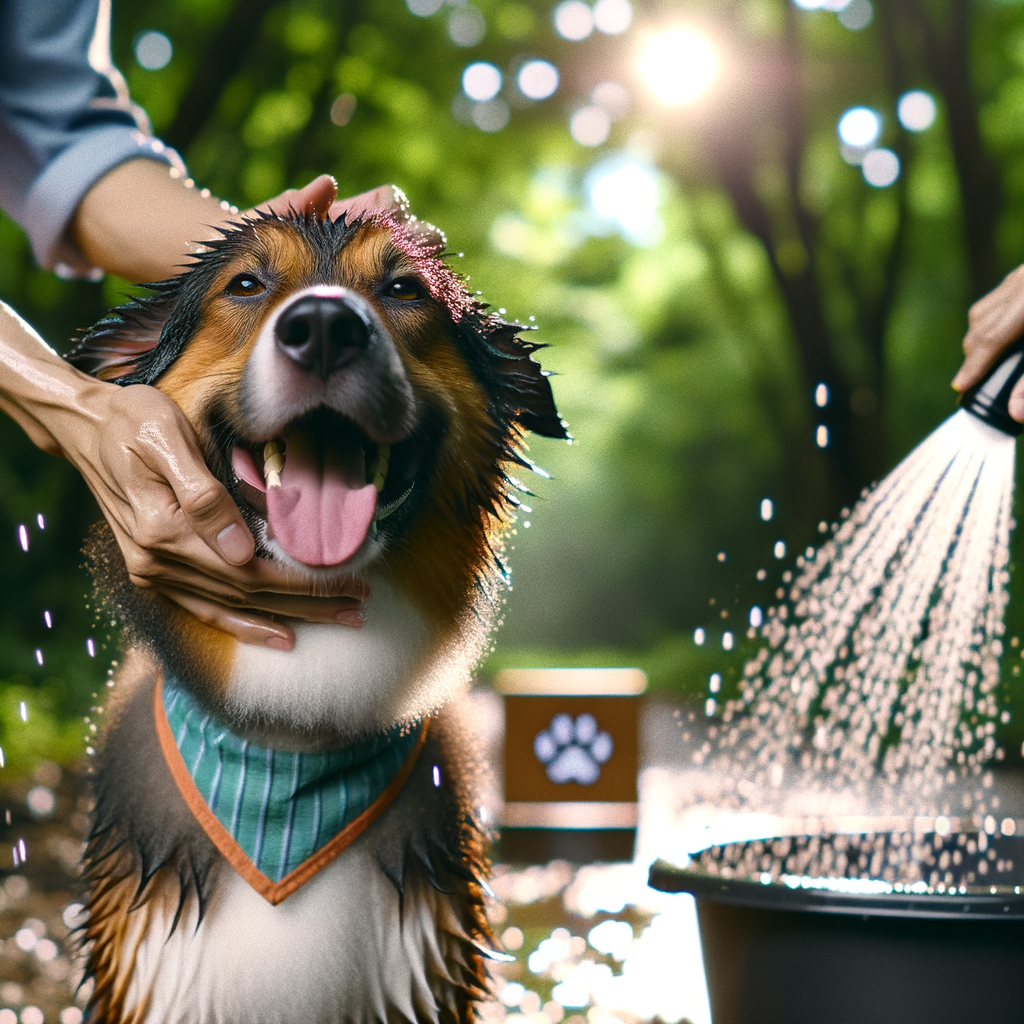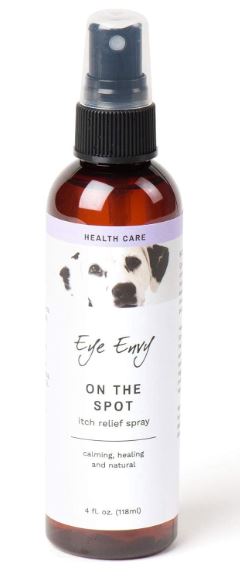Preventing Hot Spots: Tips to Keep Your Dog Itch-Free

Preventing Hot Spots: Tips to Keep Your Dog Itch-Free
-
Table of Contents
Introduction
Hot spots can be a common and uncomfortable issue for dogs. These irritated and inflamed areas of skin can cause your furry friend a lot of discomfort. Fortunately, there are steps you can take to prevent hot spots and keep your dog itch-free. Here are some tips to help you keep your pup happy and healthy.
Regularly Checking Your Dog’s Skin and Coat
Hot spots, also known as acute moist dermatitis, are a common skin condition that can affect dogs of all breeds and sizes. These red, inflamed patches of skin can be itchy and painful for your furry friend, leading to excessive scratching, licking, and even hair loss. Preventing hot spots is essential to keeping your dog comfortable and healthy. One of the best ways to prevent hot spots is by regularly checking your dog’s skin and coat for any signs of irritation or infection.
Start by establishing a routine for checking your dog’s skin and coat. This can be done during grooming sessions or simply by taking a few minutes each week to inspect your dog’s fur. Look for any redness, swelling, or hot spots on your dog’s skin. Pay close attention to areas where your dog may have more hair, such as the neck, ears, and tail. These areas are more prone to developing hot spots due to the moisture and warmth that can get trapped in the fur.
When checking your dog’s skin, also be on the lookout for any signs of parasites, such as fleas or ticks. These pesky critters can irritate your dog’s skin and lead to hot spots if left untreated. Use a fine-toothed comb to check for any signs of fleas or ticks, and be sure to remove them promptly if you find any.
In addition to checking for parasites, it’s important to inspect your dog’s skin for any cuts, scrapes, or wounds. Even minor injuries can become infected and lead to hot spots if not properly treated. Clean any wounds with a mild antiseptic solution and keep an eye on them for signs of infection, such as redness, swelling, or discharge.
Regular grooming is also essential for preventing hot spots. Brushing your dog’s coat regularly helps to remove dirt, debris, and loose hair that can irritate the skin and lead to hot spots. Use a soft-bristled brush or comb to gently remove tangles and mats from your dog’s fur, paying close attention to areas where hot spots are more likely to develop.
If you notice any signs of hot spots on your dog’s skin, such as redness, swelling, or oozing sores, it’s important to seek veterinary care immediately. Your veterinarian can provide treatment for hot spots, such as medicated shampoos, topical ointments, or oral medications, to help alleviate your dog’s discomfort and prevent the hot spots from worsening.
In conclusion, regularly checking your dog’s skin and coat is essential for preventing hot spots and keeping your furry friend itch-free. Establishing a routine for inspecting your dog’s skin, checking for parasites, and grooming regularly can help to identify any potential issues early on and prevent hot spots from developing. If you notice any signs of hot spots on your dog’s skin, seek veterinary care promptly to ensure your dog receives the appropriate treatment. By taking proactive steps to care for your dog’s skin and coat, you can help keep them healthy and happy for years to come.
Avoiding Common Allergens and Irritants
Hot spots, also known as acute moist dermatitis, are a common skin condition that can affect dogs of all breeds and ages. These red, inflamed patches of skin can be itchy and painful for your furry friend, leading to excessive scratching, licking, and even hair loss. While hot spots can be caused by a variety of factors, including bacterial infections and parasites, one of the most common triggers is allergies. By identifying and avoiding common allergens and irritants, you can help prevent hot spots and keep your dog itch-free.
One of the most common allergens for dogs is food. Just like humans, dogs can develop allergies to certain ingredients in their diet, such as beef, chicken, wheat, and soy. If your dog is prone to hot spots, it may be worth considering a hypoallergenic or limited ingredient diet. These specialized diets are formulated to minimize the risk of allergic reactions and can help keep your dog’s skin healthy and free from irritation.
In addition to food allergies, dogs can also be sensitive to environmental allergens, such as pollen, dust mites, and mold. If your dog spends a lot of time outdoors, especially during allergy season, they may be more prone to developing hot spots. To minimize exposure to these allergens, try to keep your dog indoors during peak pollen times, regularly clean and vacuum your home to reduce dust mites, and consider using an air purifier to improve air quality.
Another common irritant for dogs is flea saliva. Flea bites can cause intense itching and irritation, leading to hot spots if left untreated. To prevent flea infestations, make sure to regularly treat your dog with a flea preventative, such as a topical solution or oral medication. Additionally, regularly wash your dog’s bedding and vacuum your home to help eliminate any fleas or eggs that may be lurking in your pet’s environment.
In some cases, hot spots can be triggered by contact allergies, such as certain fabrics, cleaning products, or grooming products. If you notice that your dog develops hot spots after coming into contact with a specific material or substance, try to avoid using it in the future. Opt for hypoallergenic grooming products and choose bedding and toys made from natural, non-irritating materials.
It’s important to remember that every dog is unique, and what works for one may not work for another. If you suspect that your dog is suffering from allergies or hot spots, it’s best to consult with your veterinarian. They can help determine the underlying cause of your dog’s skin issues and recommend a treatment plan that is tailored to your pet’s specific needs.
By being proactive and taking steps to avoid common allergens and irritants, you can help prevent hot spots and keep your dog’s skin healthy and itch-free. With a little bit of effort and attention to detail, you can ensure that your furry friend stays comfortable and happy for years to come.
Maintaining a Healthy Diet for Your Dog

Maintaining a healthy diet for your dog is essential in preventing hot spots and keeping your furry friend itch-free. Just like humans, dogs require a balanced diet to support their overall health and well-being. A poor diet can lead to skin issues, including hot spots, which are painful and uncomfortable for your pet. By providing your dog with the right nutrients, you can help prevent hot spots and promote healthy skin and coat.
One of the most important aspects of a healthy diet for your dog is ensuring they receive the proper amount of essential nutrients. This includes proteins, fats, carbohydrates, vitamins, and minerals. Proteins are essential for building and repairing tissues, including the skin. High-quality sources of protein, such as chicken, beef, and fish, should be included in your dog’s diet to support healthy skin and coat.
Fats are another important component of a dog’s diet, as they provide essential fatty acids that are crucial for skin health. Omega-3 and omega-6 fatty acids are particularly beneficial for maintaining healthy skin and reducing inflammation. Sources of healthy fats include fish oil, flaxseed oil, and coconut oil. Incorporating these fats into your dog’s diet can help prevent hot spots and other skin issues.
Carbohydrates are also important for providing energy and supporting overall health. However, it’s essential to choose high-quality sources of carbohydrates, such as whole grains and vegetables, to avoid potential allergens that can trigger skin problems. Avoiding processed foods and fillers that offer little nutritional value is key to maintaining a healthy diet for your dog.

In addition to proteins, fats, and carbohydrates, vitamins and minerals play a crucial role in supporting your dog’s skin health. Vitamin E, in particular, is known for its antioxidant properties and its ability to promote healthy skin and coat. Foods rich in vitamin E, such as almonds, sunflower seeds, and spinach, can be beneficial for preventing hot spots and other skin issues in dogs.
When selecting a commercial dog food for your pet, it’s essential to choose a high-quality brand that offers a balanced and complete diet. Look for foods that list real meat as the first ingredient and avoid products that contain artificial additives, preservatives, and fillers. Reading the ingredient list and understanding what your dog is consuming is key to maintaining a healthy diet and preventing hot spots.
In addition to providing a nutritious diet, it’s essential to ensure your dog stays hydrated by providing fresh, clean water at all times. Proper hydration is crucial for maintaining healthy skin and preventing dryness and irritation that can lead to hot spots. Encouraging your dog to drink water throughout the day is essential, especially during hot weather or after exercise.
By maintaining a healthy diet for your dog that includes essential nutrients, proteins, fats, carbohydrates, vitamins, and minerals, you can help prevent hot spots and promote healthy skin and coat. Providing high-quality food, avoiding allergens, and ensuring proper hydration are key components of a balanced diet that supports your dog’s overall health and well-being. Taking the time to understand your dog’s nutritional needs and making informed choices about their diet can make a significant difference in preventing hot spots and keeping your furry friend itch-free.
Proper Grooming Techniques to Prevent Hot Spots
Hot spots, also known as acute moist dermatitis, are a common skin condition that can affect dogs of all breeds and sizes. These red, inflamed patches of skin can be itchy and painful for your furry friend, leading to excessive scratching, licking, and even hair loss. While hot spots can be caused by a variety of factors, including allergies, insect bites, and poor grooming habits, there are steps you can take to prevent them from occurring in the first place.
Proper grooming is essential for maintaining your dog’s skin and coat health and can help prevent hot spots from developing. Regular brushing helps to remove loose fur, dirt, and debris from your dog’s coat, preventing matting and tangling that can trap moisture against the skin and lead to hot spots. Brushing also stimulates the skin and distributes natural oils, keeping your dog’s coat healthy and shiny.
In addition to regular brushing, bathing your dog with a gentle, hypoallergenic shampoo can help keep their skin clean and free of irritants that can trigger hot spots. Be sure to rinse your dog thoroughly after bathing to remove all traces of shampoo, as leftover residue can irritate the skin and lead to hot spots. Avoid using harsh chemicals or fragrances in your dog’s grooming products, as these can also cause skin irritation and inflammation.
Trimming your dog’s coat regularly can also help prevent hot spots by reducing the risk of matting and tangling, which can trap moisture and bacteria against the skin. Pay special attention to areas where your dog’s fur is thickest, such as around the ears, neck, and tail, as these are common hot spot locations. If your dog has long or thick fur, consider having them professionally groomed to ensure their coat is kept in good condition.
In addition to regular grooming, it’s important to keep your dog’s living environment clean and free of allergens that can trigger hot spots. Vacuuming and dusting regularly can help reduce dust mites, pollen, and other allergens that can irritate your dog’s skin. Wash your dog’s bedding and toys frequently to remove dirt, bacteria, and other irritants that can contribute to hot spots.
If your dog is prone to hot spots, consider using a topical treatment or medicated shampoo to help soothe their skin and prevent further irritation. Consult with your veterinarian before using any new products on your dog’s skin, as some ingredients may be harmful or cause allergic reactions. Your vet may also recommend dietary changes or supplements to help support your dog’s skin health and reduce the risk of hot spots.
By following these proper grooming techniques and taking steps to keep your dog’s skin clean and healthy, you can help prevent hot spots and keep your furry friend itch-free. Remember to monitor your dog’s skin regularly for any signs of irritation or inflammation, and consult with your veterinarian if you notice any changes in their skin or coat. With proper care and attention, you can help your dog stay happy and healthy for years to come.
Identifying Early Signs of Hot Spots
Hot spots, also known as acute moist dermatitis, are a common skin condition that can affect dogs of all breeds and ages. These red, inflamed patches of skin can be itchy and painful for your furry friend, leading to excessive scratching, licking, and biting. If left untreated, hot spots can quickly worsen and become infected, causing even more discomfort for your pet. Fortunately, there are steps you can take to prevent hot spots from developing in the first place.
One of the key ways to prevent hot spots is by identifying early signs of irritation on your dog’s skin. By catching these symptoms early on, you can take action to address the underlying cause and prevent hot spots from forming. Some common early signs of hot spots include redness, swelling, and a warm sensation on the affected area. Your dog may also exhibit behaviors such as excessive scratching, licking, or biting at the skin.
If you notice any of these symptoms on your dog, it’s important to take action right away. Start by examining the affected area closely to determine the extent of the irritation. Gently part the fur to get a better look at the skin underneath, being careful not to cause further discomfort to your pet. If you see any signs of redness, swelling, or oozing, it’s a good idea to consult with your veterinarian for a proper diagnosis and treatment plan.
In addition to physical symptoms, it’s also important to pay attention to your dog’s behavior. If you notice that your pet is constantly scratching, licking, or biting at a particular area of their skin, it could be a sign of underlying irritation that may lead to hot spots. By addressing these behaviors early on, you can help prevent hot spots from developing and keep your dog itch-free.
Another important factor to consider when preventing hot spots is your dog’s grooming routine. Regular grooming can help keep your pet’s skin clean and healthy, reducing the risk of irritation and hot spots. Make sure to brush your dog’s coat regularly to remove any dirt, debris, or loose fur that could contribute to skin irritation. Bathing your dog with a gentle, hypoallergenic shampoo can also help keep their skin clean and free of irritants.
In addition to grooming, it’s important to pay attention to your dog’s diet and overall health. A balanced diet rich in essential nutrients can help support your pet’s skin health and reduce the risk of hot spots. Make sure your dog is getting enough water to stay hydrated, as dehydration can contribute to skin irritation and hot spots. Regular exercise and mental stimulation can also help keep your dog healthy and happy, reducing the likelihood of skin issues.
By staying vigilant and proactive in monitoring your dog’s skin health, you can help prevent hot spots from developing and keep your furry friend itch-free. By identifying early signs of irritation, maintaining a regular grooming routine, and supporting your dog’s overall health, you can help keep hot spots at bay and ensure that your pet stays happy and healthy for years to come.
Conclusion
Preventing hot spots in dogs is important for their overall health and well-being. By following these tips, you can help keep your dog itch-free and comfortable. Regular grooming, proper nutrition, and keeping your dog’s environment clean are all key factors in preventing hot spots. If you notice any signs of irritation or itching, it’s important to consult with your veterinarian for proper treatment. By taking proactive steps to prevent hot spots, you can help your dog stay happy and healthy.


